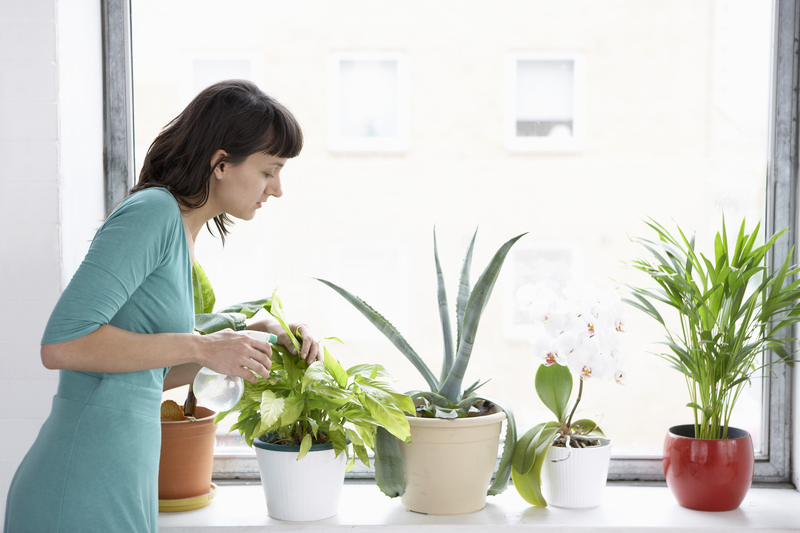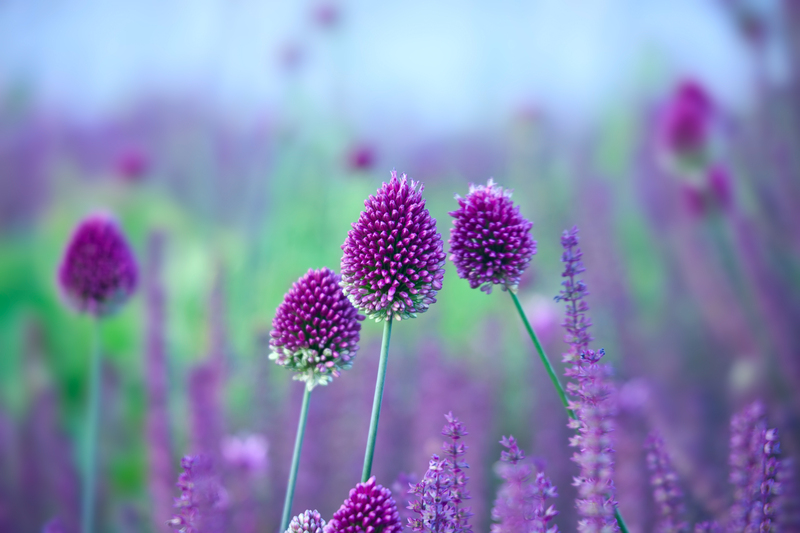Exploring Canine-Friendly Gardening Tips
Posted on 15/08/2025
Exploring Canine-Friendly Gardening Tips
If you're a passionate gardener and a dog owner, you already know that balancing your love for plants with the safety and happiness of your furry friend can be a challenge. Thankfully, with the right strategies, you can cultivate a beautiful, functional, and dog-friendly garden that both you and your canine companion will love. In this comprehensive guide, we'll explore the best canine-friendly gardening tips for every home, covering everything from safe plant choices to landscape design solutions.

Why Consider Dog-Friendly Gardening?
Dogs are naturally curious and love to explore, dig, sniff, and sometimes nibble in the garden. Unfortunately, not every garden element is safe for your four-legged friend. Certain plants are toxic to dogs, chemicals can pose hidden dangers, and some landscaping designs encourage destructive behaviors like digging. Embracing dog-safe gardening techniques enables you to create a safe, enjoyable outdoor oasis for your pet, preventing costly vet trips and encouraging healthy habits for your dog.
Benefits of a Pet-Safe Garden
- Prevents accidental poisoning from toxic plants and chemicals
- Encourages physical activity and mental stimulation for dogs
- Minimizes destruction to plants and landscaping by providing appropriate outlets for canine energy
- Strengthens the bond between owner and pet through shared outdoor time
- Enhances the overall beauty and functionality of your yard
Choosing Dog-Safe Plants
The cornerstone of any canine-awareness gardening effort is plant selection. Many common garden plants are toxic to dogs, causing symptoms ranging from mild gastrointestinal upset to severe organ damage. Focus on incorporating non-toxic, dog-friendly plants into your landscape for peace of mind.
Top 10 Dog-Friendly Plants for Your Garden
- Sunflowers - Bright, cheerful, and pet-safe
- Snapdragons - Add color without risk
- Roses - Just watch the thorns
- Marigolds - Naturally repel some pests, non-toxic to dogs
- Creeping thyme - Hardy, fragrant, great ground cover
- Basil - Tasty herb, safe for canines
- Camellias - Beautiful flowers that won't harm your pup
- Spider plants - Dog-safe and excellent air-purifiers
- Boston ferns - Lush, non-toxic greenery
- Magnolias - Classic flowering tree option
Tip: Always double-check plant safety using a reliable source such as the ASPCA Plant Database before introducing new species to your garden.
Plants to Avoid in Canine-Friendly Gardens
- Azaleas
- Oleander
- Sago palm
- Daffodils
- Lilies
- Foxglove
- Castor bean
Many of these plants contain compounds that are highly toxic to dogs. If you already have these in your yard, it's best to remove them or fence them off completely to ensure your pup's safety.
Landscape Design Ideas for Dog-Friendly Spaces
You can strike the perfect balance between aesthetics and practicality by integrating pet-safe landscaping features. Here are some expert tips to guide your backyard transformation:
1. Designate Dog Zones
Dogs love to patrol, play, and sometimes dig. Setting up designated doggy areas encourages positive behavior and protects the rest of your garden. Consider these elements:
- Dog paths: Use mulch, gravel, or sturdy ground cover where dogs naturally patrol
- Digging pit: Fill a corner with sand or soft mulch, hiding toys or treats to encourage digging there only
- Shady spots: Create cool retreats beneath trees or with canine-friendly shelters
- Fenced play spaces: Safely contain dogs and keep vulnerable plants out of reach
2. Secure Fencing Solutions
An essential canine-safe garden tip is proper containment. Dogs are natural explorers, so sturdy fencing helps keep them inside and harmful wildlife or plants out.
- Height and depth: Ensure fences are tall enough to prevent jumping and dug deep to prevent tunneling
- Non-toxic materials: Use untreated wood, metal, or safe composite blends
- No sharp edges: Sand down or cover any points of potential injury
3. Pathways and Ground Cover
Choose materials that are gentle on paws, easy to clean, and durable. Clover, creeping thyme, and buffalo grass are all excellent options--tough, non-toxic, and low-maintenance. Avoid cocoa mulch, which is toxic to dogs.
4. Water Features
Many dogs adore water. Integrate a canine-safe water feature, such as a shallow fountain or splash pool. Always supervise swimming sessions and ensure there's a shallow exit for easy access. Never use chemical additives in ponds or water bowls accessible to your pets.
Natural Pest Control for Dog-Friendly Gardens
Chemical pesticides and fertilizers can be harmful or even lethal to dogs. Adopt organic gardening methods and pet-safe solutions to control unwanted pests and nourish your plants safely.
Safe Alternatives to Chemical Pesticides
- Neem oil: A natural pest deterrent, safe when dry
- Diatomaceous earth: Controls fleas, ticks, and crawling insects
- Companion planting: Marigolds and basil can repel many insects naturally
- Physical barriers: Netting or row covers protect edible crops
Regularly inspect your dog for signs of flea or tick bites after outdoor play, and wash their paws to minimize accidental ingestion of garden debris.
Organic Fertilizers and Mulches
- Composted manure or organic compost--ensure it's well-aged to kill pathogens
- Straw or pine needles--safe, natural mulching options
- Avoid cocoa mulch--chocolate residue is highly toxic to dogs
Dog-Proofing Your Garden
No matter how well-trained, most dogs will occasionally trample, dig, or munch on plants. Using strategic deterrents and dog-proofing techniques helps to minimize damage while respecting your dog's instincts.
Physical Barriers and Deterrents
- Small fences or cages around prized plants
- Spiky ground covers like holly or dense shrubs as natural barriers (ensure these are non-toxic)
- Decorative boulders or logs to steer foot traffic
- Motion-activated sprinklers to deter digging without harm
Training and Positive Reinforcement
Use treats and praise to reinforce boundaries. Teach commands like "leave it" or "stay" when your dog approaches restricted zones. Always provide alternative entertainment such as toys or a dedicated play area.
Creating a Stimulating Canine Oasis
A dog-friendly garden isn't just about safety--it's about enrichment, too. Dogs are happiest with plenty of sensory experiences and opportunities to burn off energy. Here's how to design a stimulating and enjoyable outdoor space:
Sensory Paths
Incorporate different textures underfoot, aromatic herbs like mint and lavender (non-toxic), and visual interest at different heights to keep your dog's mind and senses engaged.
Shade and Shelter
- Trees and tall shrubs for natural shade
- Dog houses or canopies for rain/sun protection
- Raised decks or platforms for lookout spots
Safe Play Structures
- Tunnels, ramps, and agility equipment for active breeds
- Secure tether points for interactive play
- Dig pits filled with sand or mulch for excavation instincts
Seasonal Considerations in Dog-Friendly Gardening
Your dog's needs in the garden change with the season. Here are some tips to keep your canine companion happy year-round:
- Spring: Watch for bulbs like tulips and daffodils--these are toxic if dug up and eaten.
- Summer: Ensure plenty of shade and cool water to prevent overheating.
- Fall: Rake fallen leaves--wet piles can harbor mold or pests harmful to dogs.
- Winter: Use pet-safe ice melts and limit outdoor exposure in harsh climates.

Quick Safety Checklist for Dog Owners
- Store chemicals, fertilizers, and sharp tools out of reach
- Regularly inspect fencing and gates for damage
- Supervise dogs when first introducing them to new plants or features
- Stay up-to-date on first aid for plant poisoning
- Consult your vet if you suspect your dog has ingested a toxic plant
Conclusion: Growing Happiness for You and Your Dog
Creating and maintaining a dog-friendly garden is a truly rewarding endeavor. By selecting safe plants, using pet-friendly gardening practices, and designing an enriching landscape, you lay the foundation for countless hours of safe, joyful play and relaxation in your backyard retreat. Whether you have a tiny Chihuahua or a boisterous Labrador, these dog-friendly gardening tips ensure that your green thumb and your dog's wagging tail co-exist in perfect harmony.
For more resources and inspiration on exploring canine-friendly gardening tips, subscribe to gardening newsletters, consult your local nursery, or connect with dog-owner gardening communities online. Happy gardening--and happy tails!

